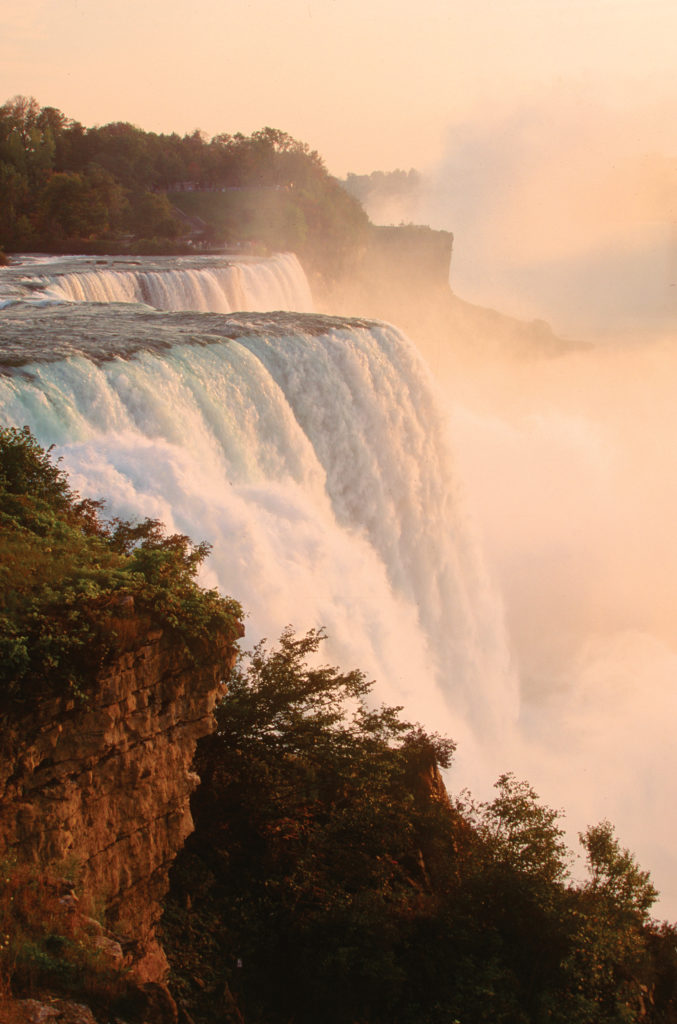Francis R. Kowsky, Buffalo, NY (2021)
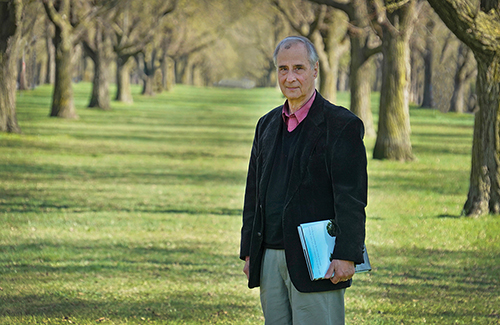
“The landscape of a city can shape your imagination,” Frank Kowsky says as he reminisces about growing up in Washington, DC, amid its broad, leafy streets and elegant traffic circles. Frank remembers spending many boyhood afternoons in the Olmsted firm’s Rock Creek Park, and even back then he was struck by the meandering park’s wild, luxuriant landscape and its striking contrast to the bustling, international city around it. Frank’s father frequently took him to the National Gallery of Art and the Smithsonian Institution. “I spent much of my childhood just looking,” he recalls, and the passions that would shape his life—for landscape, architecture, and painting—began to take hold. Born in 1943, Frank would become one of the first scholars to apply art historical methods and concepts to the emerging profession of landscape studies.
As an undergraduate at George Washington University, Frank initially dreamed of going into the foreign service, but when he took an introductory art history course as an elective his life’s trajectory changed. “I thought, this is fantastic. I loved it all, every period.” He completed his PhD at Johns Hopkins, where he was lucky enough to study with Phoebe Stanton, who shared his special interest in nineteenth-century American architecture. For decades, Stanton drove the architectural design and historic preservation agenda in Baltimore, and in retrospect Frank credits her approach with influencing his goals throughout the years ahead.
Frank wrote his PhD dissertation on the architect Frederick Clarke Withers, and this study became his first book, The Architecture of Frederick Clarke Withers and the Progress of the Gothic Revival in America after 1850 (1980). While investigating the work of Withers and that of his colleagues Andrew Jackson Downing and Calvert Vaux, Frank came to cherish the beauty of the Hudson River Valley. This led him to an abiding love for the Hudson River School of American painting. During what was the heyday of abstract expressionism, Frank’s interests stood out. He saw the work of Withers, Downing, and Vaux as a representation of the Romantic attitude toward nature, and he came to understand that landscape designs are three-dimensional works of art. This perspective would profoundly influence Frank’s second book, Country, Park & City: The Architecture and Life of Calvert Vaux (1998).
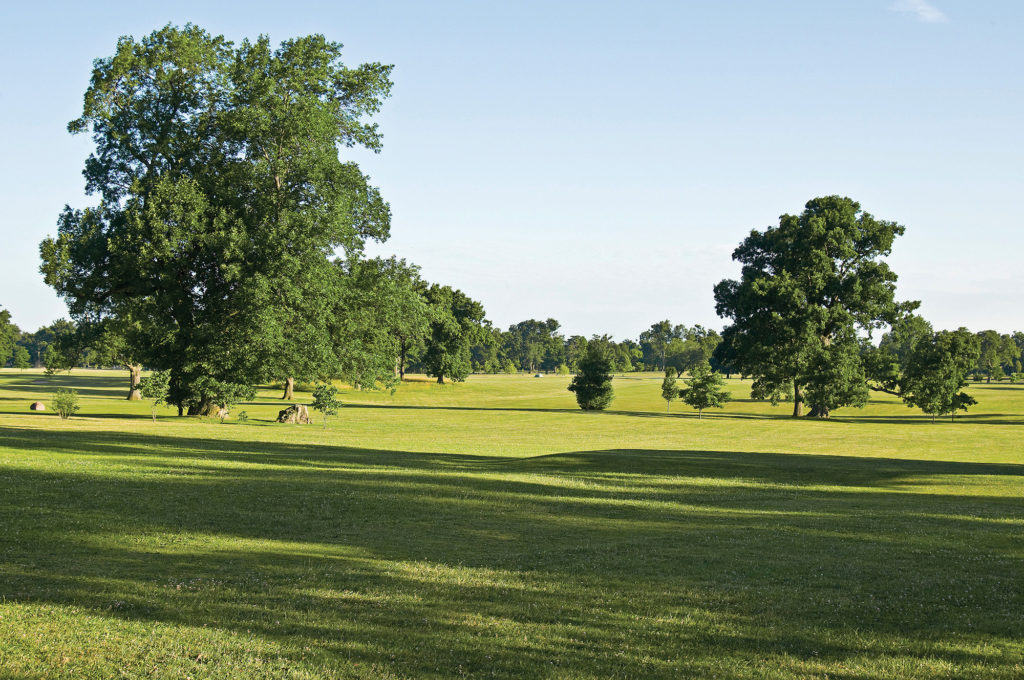
Pursuing research on Withers, Frank visited Charles Beveridge and Charles Capen McLaughlin at their carrel in a remote corner of the stacks at the Library of Congress, where they were toiling on the Frederick Law Olmsted papers. This was the beginning of Frank’s enduring friendships with them both. One day, when the three men were lunching at a favorite old-time Capitol Hill pub, Frank mentioned that he’d accepted a position at Buffalo State College to teach art history. This was exciting news to Beveridge and McLaughlin, who told Frank that Olmsted had considered his Buffalo designs to be his greatest accomplishment. Frank had traveled to Buffalo as a child, to visit family, but he’d never been aware of the city’s vast Olmsted legacy of parks, parkways, and indeed entire neighborhoods, their tranquil streets laid out according to Olmsted’s precepts.
When Frank moved to Buffalo in 1970, he notes, “the city was suffering terribly.” Its industrial might and tremendous wealth had faded away. The completion of the St. Lawrence Seaway a decade earlier had put an end to the city’s massive Great Lakes shipping trade. Many successful local businesses had been bought up by national conglomerates, which had either closed or relocated them. Unemployment was high, and the future looked bleak. In those years, Frank says, “Buffalo was like Rome in the ninth century, after the Golden Age, filled with decaying monuments, the remains of a lost era—and no one knew what to do with them.”
I knew this suffering city firsthand, because I grew up in Buffalo during the 1960s and ’70s. I remember the downtown becoming increasingly desolate, as once-thriving shops closed. Louis Sullivan’s Guaranty Building, among other architectural treasures, was forever at the brink of demolition. The names Frederick Law Olmsted and Calvert Vaux were apparently forgotten. With the city gripped by economic depression and a kind of emotional and psychological malaise, few in Buffalo seemed to value or even know about the city’s illustrious past. Olmsted and Vaux’s pristine lake in Delaware Park had become a muddy dumping ground, and the Scajaquada Expressway had been built on one of the park’s carriage drives. Olmsted’s astonishing Humboldt Parkway, two hundred feet wide, shaded by six rows of trees, and almost two miles long, had been replaced by the trench-cut Kensington Expressway, and as a result a prosperous, predominantly African American neighborhood had been cut in two, its vibrant sense of community destroyed. The plague of Dutch elm disease had decimated Olmsted’s parks, parkways, and neighborhoods.
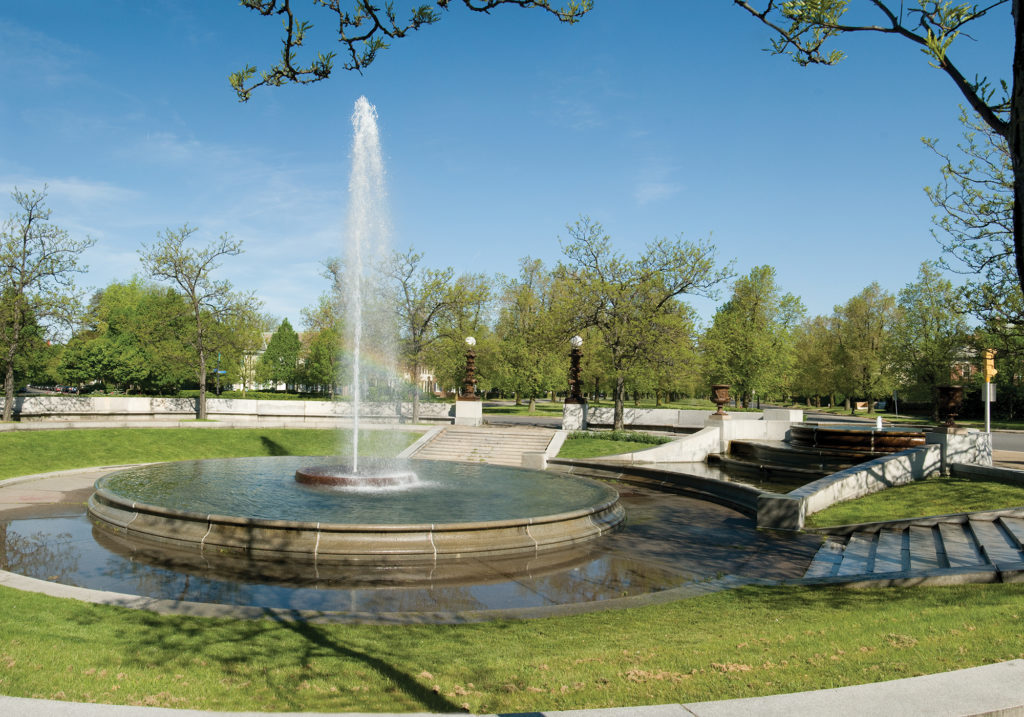
At Buffalo State College, where he is now SUNY Distinguished Professor of Fine Arts Emeritus, the highest rank in the statewide university system, Frank taught—by choice—the introductory classes that other professors sought to avoid. This fact reveals much about Frank’s principles, as he focused on young adults who knew next to nothing about ancient Egypt or medieval France, and opened their minds to the pyramids and to Gothic cathedrals, changing their comprehension of the world in the process. The campus is situated on what was once part of the expansive, Olmsted-designed landscape surrounding H. H. Richardson’s Buffalo State Hospital, the massive, abandoned complex falling into ruin right next door to the college buildings Frank visited each day. The campus is also adjacent to Delaware Park, so Frank was thoroughly enmeshed in the remnants of the city’s former glory.
Frank credits his teaching with propelling him to join the fight—essentially to begin the fight—for historic preservation in Buffalo. As he recalls, “I thought, how can you teach young people about the history of art and architecture when extraordinary buildings and landscapes are in danger all around you? You have to do something to stop the destruction.”
Partly on his own, and also in collaboration with his colleague Martin Wachadlo, Frank began preparing National Register nominations for Buffalo’s historic structures, one by one by one. To date, these listings number twenty-eight, and their architectural range is remarkable: everything from the Hotel Lafayette, designed by Louise Blanchard Bethune, the first woman member of American Institute of Architects, to the Trico windshield-wiper plant, a leading example of a style known as the daylight factory, to houses of worship, an athletic facility, a livery stable, private clubs, homes, grain elevators, and the Parkside Candy store. One especially memorable project was the preservation of the Rider-Hopkins Farm, in whose kitchen the Western New York Land Conservancy was founded.
Frank’s work in this area continues today. He believes that the labor-intensive effort both preserves the past and improves the future. Architects, knowing that a new structure will be located next to a building listed on the National Register of Historic Places, are inspired to do their very best work, and clients demand nothing less. The designation also provides what Frank terms a “moral aura,” which helps to protect these buildings from demolition. In addition, he and Wachadlo have been assembling historical and cultural resource surveys for a variety of western New York locales. Eight have been completed so far. These surveys, which can be the first step toward creating historic districts, explore the history of a community and then move street by street to identify individual buildings that would be suitable for National Register designation.

With other concerned local citizens, Frank began the Buffalo Friends of Olmsted Parks, now called the Buffalo Olmsted Parks Conservancy. His dedication to Buffalo’s Olmsted and Vaux heritage is marvelously expressed in his 2013 book for LALH, The Best Planned City in the World: Olmsted, Vaux, and the Buffalo Park System. To this day, Franks says, when he walks along Buffalo’s glorious parkways, “I feel I’m walking in Olmsted’s shoes. The landscape has become part of me.”
Through his multiple endeavors, Frank’s work has had a national impact. For many years he was a member of the New York State Board for Historic Preservation and is among the founders and trustees of the National Association of Olmsted Parks. A Fellow of the Society of Architectural Historians, he lends his expertise to numerous other professional organizations as well. His writings have included dozens of scholarly articles, as well as contributions to architectural guides, exhibition catalogs, and more. He’s currently writing a book for LALH examining Calvert Vaux as a landscape architect, and is completing a study of the work of architect Jacob Wrey Mould, who designed the decorative carvings on Bethesda Terrace in Central Park.
Always generous with his time, and ever practical, Frank has a gift for bringing diverse people together to work for the common good. Some activists only talk—Frank, however, takes action, and shows by his example how to fight for change, day by day, in small increments that cumulatively have a large impact.
“The future revival of a city is linked to the revival of its past, of its history,” Frank says. During recent decades in Buffalo, he’s witnessed a dramatic shift, and he sees hope everywhere. People no longer view historic structures and landscapes as impediments to progress, but instead esteem them as contributing to a better future. Investment tax credits have given developers an incentive to preserve historic buildings. In Buffalo, a public commitment is growing to remove the Scajaquada Expressway from Delaware Park. And on the east side of the city, the community has organized to demand that Humboldt Parkway be restored by decking over the Kensington Expressway.
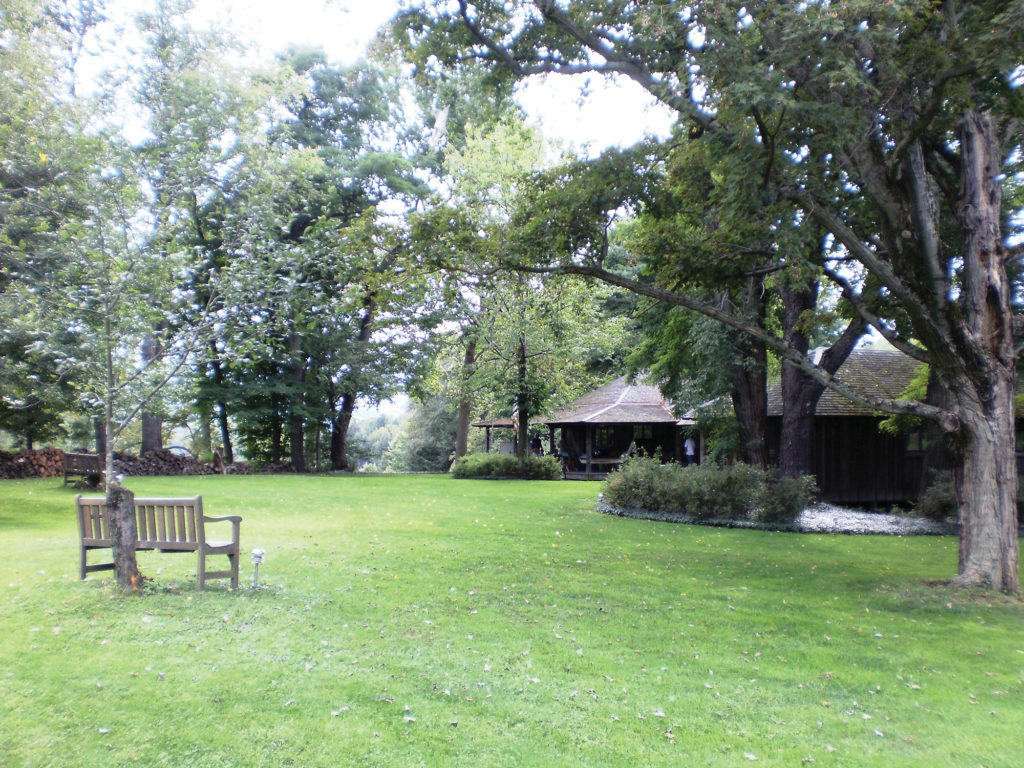
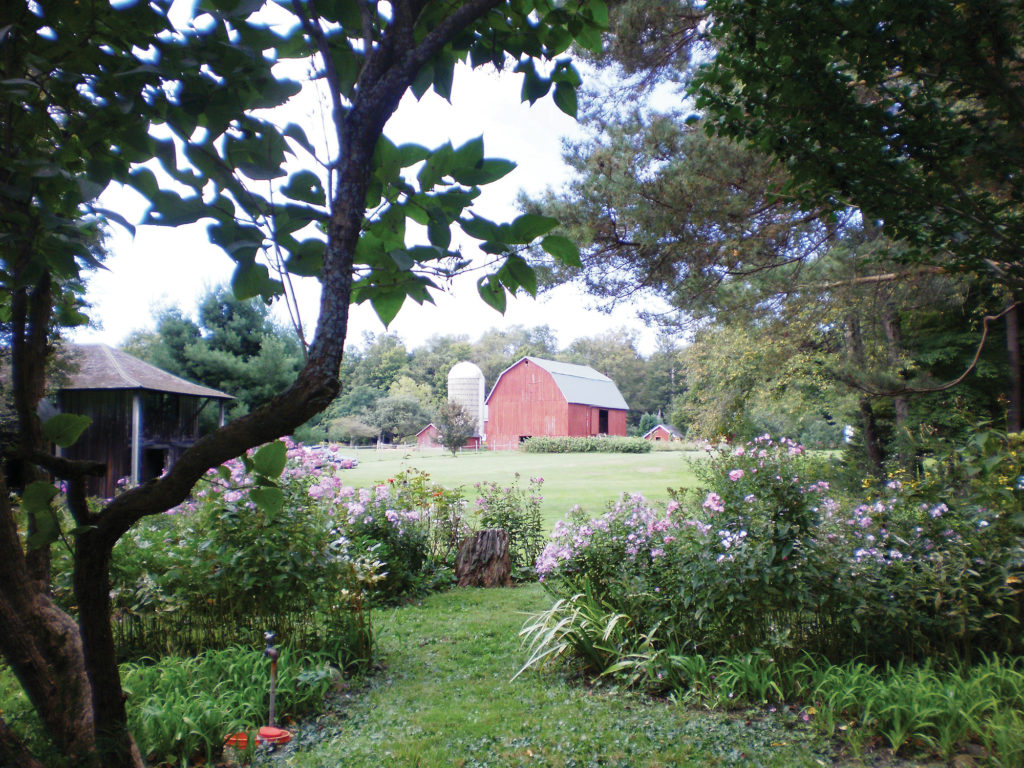
Such grassroots local involvement is, to Frank, among the greatest achievements of preservation activism: citizens coming together to reclaim their past and build better environments for their future, with city and state authorities finally willing to listen to them.
Frank likes to quote the proverb, “If you find something you love to do, you’ll never work again.” This defines how Frank built his life, his work becoming a tireless labor of love that truly shows how one person can make a difference.
In the preface to Country, Park & City, Frank writes that Vaux’s “approach to design—his way of looking at a problem ‘comprehensively,’ paying attention to the larger context of a building or park—is an enduring lesson from his career,” and adds, “Vaux also endears himself to us as an idealist who believed that buildings and parks foremost were products of art. In the spirit of this conviction, he devoted himself to advancing the standing of the disciplines of architecture and landscape architecture.” Add to this the preservation of architecture and landscape architecture, and you have a perfect description of the work of Francis R. Kowsky himself.
—Lauren Belfer has won high praise for her three novels, including the New York Times bestseller City of Light, set in Buffalo at the dawn of the twentieth century. Her most recent novel, And After the Fire, received a National Jewish Book Award.
